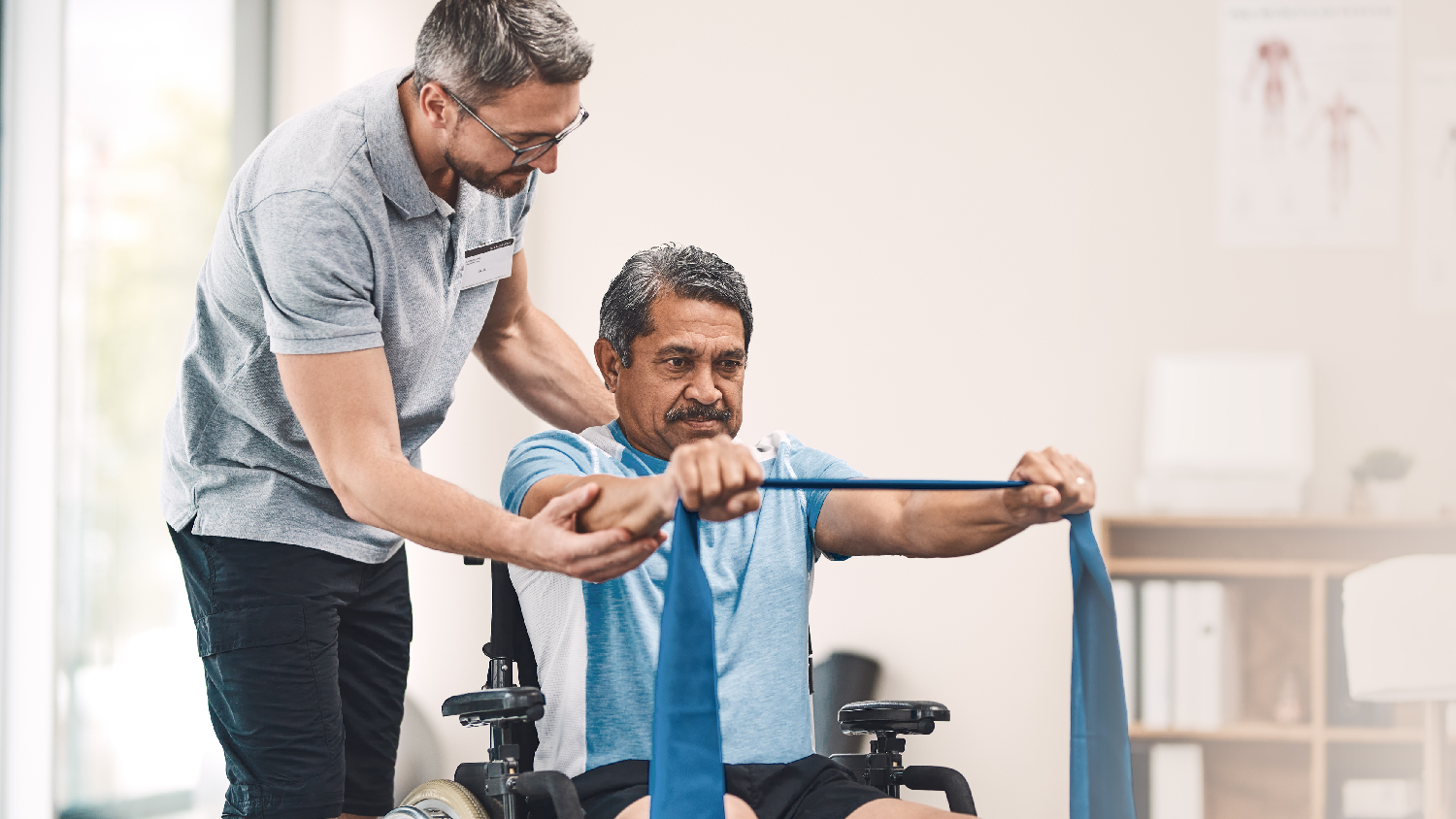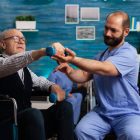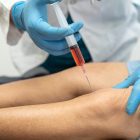Synopsis
Managing arthritis in the hands and fingers is critical for maintaining dexterity and quality of life, demanding highly specialized therapeutic intervention. Effective physiotherapy for arthritis in hands focuses on reducing joint stiffness, managing pain, and preserving mobility for daily tasks. This article explores the benefits of a comprehensive physical therapy for arthritis in hands program, which often includes heat therapy and joint protection techniques. We detail specific protocols for physio for thumb arthritis, as the thumb joint is frequently affected and requires precise care. Addressing generalized discomfort requires a focused physio for finger pain plan. Utilizing targeted finger joint pain treatment minimizes discomfort during daily activities. We also review the importance of implementing physio exercises for finger injuries to enhance recovery from trauma and prevent stiffness. Consistent physiotherapy for arthritis in hands significantly slows the progression of joint damage. Expert physical therapy for arthritis in hands care includes advice on assistive devices. Dedicated physio for thumb arthritis protocols are essential for pinch and grip strength. Meticulous physio for finger pain management improves functional capacity. Targeted finger joint pain treatment provides lasting relief. Implementing specialized physio exercises for finger injuries accelerates recovery. Comprehensive physiotherapy for arthritis in hands and effective physical therapy for arthritis in hands are the cornerstones of non-surgical care. Specialized physio for thumb arthritis protocols and dedicated finger joint pain treatment ensure functional longevity, proving the value of expert physio for finger pain and essential physio exercises for finger injuries.
Table of Contents
- The Functional Impact of Hand and Finger Arthritis
- Comprehensive Physiotherapy for Arthritis in Hands Protocols
- Targeted Physio for Thumb Arthritis- Restoring Pinch Grip
- The Value of Physical Therapy for Arthritis in Hands Techniques
- Treating Generalized Pain- Meticulous Physio for Finger Pain Management
- Finger Joint Pain Treatment- Beyond Medication
- Implementing Physio Exercises for Finger Injuries for Full Recovery
- The Orthocure Advantage- Specialized Hand and Upper Extremity Care
- Partnering with Orthocure for Preserved Dexterity
The Functional Impact of Hand and Finger Arthritis
The joints of the hands and fingers, especially the base of the thumb, are highly susceptible to osteoarthritis (wear-and-tear arthritis), a condition that severely compromises dexterity, grip, and independence. Chronic pain and stiffness can turn simple daily tasks—like opening jars, turning keys, or even writing—into agonizing challenges. Because the hands are in constant use, effective management must be continuous and highly specialized, focusing on joint preservation and pain mitigation. Ignoring these symptoms not only reduces quality of life but can accelerate joint destruction. Therefore, seeking dedicated physiotherapy for arthritis in hands is the crucial first step toward protecting long-term functional capacity.
Comprehensive Physiotherapy for Arthritis in Hands Protocols
Comprehensive physiotherapy for arthritis in hands is the cornerstone of conservative management, aiming to reduce inflammation, manage stiffness, and maintain muscle support around the compromised joints. The treatment utilizes gentle, sustained range-of-motion exercises to maintain joint fluid dynamics, often combined with heat modalities (such as warm water soaks or paraffin wax) to increase tissue extensibility and soothe pain. Protocols for physiotherapy for arthritis in hands also include patient education on joint protection principles, teaching techniques to minimize stress during strenuous activities and thus slowing the degenerative process.
Targeted Physio for Thumb Arthritis- Restoring Pinch Grip
The basal joint of the thumb (CMC joint) is one of the most commonly affected joints, and its function is crucial for pinch and grip strength. Specialized physio for thumb arthritis protocols are essential for maintaining the stability and range of motion of this critical joint. Treatment often includes highly specific mobilization techniques to relieve pressure, alongside exercises designed to strengthen the stabilizing muscles of the thumb base. The goal of physio for thumb arthritis is to preserve the patient’s ability to perform pinch movements (e.g., holding a pen or key), which are vital for daily independence. This targeted approach prevents chronic strain and supports the entire hand complex.
How does strengthening the thumb base reduce pain?
The Value of Physical Therapy for Arthritis in Hands Techniques
Effective physical therapy for arthritis in hands relies on a combination of techniques that empower the patient to manage their condition. This includes the prescription of custom splints or braces to stabilize painful joints during rest or activity. The specialist introduces adaptive equipment strategies, advising on tools that reduce the necessary force for gripping and pinching. Furthermore, physical therapy for arthritis in hands utilizes specific dexterity exercises, often using therapeutic putty or small objects, to maintain muscle tone and functional precision, which is essential for preserving fine motor skills despite joint pathology.
Treating Generalized Pain- Meticulous Physio for Finger Pain Management
When arthritis leads to generalized discomfort, a meticulous physio for finger pain management protocol is required. This specialist approach involves differentiating arthritic joint pain from muscular trigger points or nerve irritation (such as carpal tunnel symptoms) that often co-exist. Protocols for physio for finger pain incorporate soft tissue mobilization to release tension, and nerve gliding exercises to ensure nerve mobility. This comprehensive assessment ensures that all sources of discomfort are addressed, providing lasting relief and improving overall functional capacity in the hand.
What are common non-arthritic causes of finger joint pain?
Finger Joint Pain Treatment- Beyond Medication
Specialized finger joint pain treatment provides a non-pharmacological, structural approach to managing chronic discomfort. While medication can alleviate inflammation, it does not correct the underlying joint dysfunction or muscle weakness. Effective finger joint pain treatment focuses on maximizing joint health through controlled movement, preserving the cartilage, and rebuilding the strength that supports the joints. For severe cases, regenerative medicine techniques may be integrated alongside the physical therapy plan to enhance tissue repair. This holistic perspective offers a more durable solution than relying solely on pharmaceutical intervention.
Implementing Physio Exercises for Finger Injuries for Full Recovery
Even in arthritic hands, acute injuries or trauma necessitate the strategic implementation of physio exercises for finger injuries . After an injury, the specialized physio exercises for finger injuries focus on safely restoring range of motion to prevent contractures and stiffness, a critical complication in already compromised joints. These exercises begin gently and progress to building strength and coordination, ensuring the patient regains functional pinch and grasp. The specialist’s guidance is vital for ensuring the exercises do not overload the joints affected by arthritis, making full recovery a possibility.
What are the risks of using generic exercises after a finger injury?
The Orthocure Advantage- Specialized Hand and Upper Extremity Care
ORTHOCURE CLINICS AND GYMS delivers integrated, specialized care for hand and finger arthritis, ensuring every patient receives the highest standard of physical therapy for arthritis in hands . Our unique 4 Point Protocol guarantees that treatment is standardized, precise, and focused on Structural Correction—the key to managing this chronic condition. We integrate Orthopaedic Doctors and dedicated Physiotherapists to collaboratively design protocols for physio for thumb arthritis and generalized hand pain. Furthermore, we leverage advanced technologies and specialized strength-testing equipment, ensuring that muscle strength and functional precision are optimally restored, guaranteeing the most durable long-term outcome.
How does Orthocure’s multi-disciplinary approach benefit arthritis patients?
Partnering with Orthocure for Preserved Dexterity
The services offered by ORTHOCURE CLINICS AND GYMS provide a complete pathway to maintaining dexterity and independence, even with chronic joint conditions. We offer expert physio for finger pain management and advanced finger joint pain treatment protocols, prioritizing non-surgical, evidence-based solutions. Our ultimate USP is our dedication to Structural Correction and maximizing functional capacity. By partnering with Orthocure, you gain access to a protocol-driven pathway guided by experienced specialists, ensuring you confidently manage your hand health and maintain a high quality of life.
What specialized programs are available for seniors with hand issues?
FAQs
How does physiotherapy for arthritis in hands help manage chronic stiffness and pain?
Physiotherapy for arthritis in hands manages chronic stiffness and pain by employing techniques aimed at improving joint lubrication and reducing inflammation in the small joints. Treatment includes gentle, sustained range-of-motion exercises, often facilitated by heat therapy (like paraffin wax), to increase flexibility. A crucial part of the physical therapy for arthritis in hands approach is teaching joint protection strategies, where the patient learns how to modify grips and use adaptive devices to offload stressed joints during daily tasks. This systematic process helps maintain function and reduce reliance on medication, making it an essential component of finger joint pain treatment.
What are the core components of a specialized program for physio for trigger finger?
A specialized program for physio for trigger finger focuses on resolving the inflammation in the tendon sheath that causes the catching or locking sensation. The core components include gentle tendon gliding exercises, which help the tendon move smoothly through its restricted sheath, and manual therapy to reduce localized swelling. Specialists often prescribe rest or a splint during periods of sleep to prevent the finger from locking and reduce irritation. This targeted approach, a key part of effective finger joint pain treatment, often minimizes symptoms and prevents the need for injections or surgical release.
How is physiotherapy for hand fingers utilized after a significant wrist or forearm injury?
Physiotherapy for hand fingers is utilized after a wrist or forearm injury to actively combat the stiffness and loss of dexterity that result from prolonged immobilization. Even if the fingers were not fractured, they suffer from disuse. The therapist introduces specific physio exercises for finger injuries, such as putty exercises and individual finger mobilizations, to restore the full, independent movement of each digit. This comprehensive strategy ensures that functional tasks like gripping and pinching are regained, ultimately accelerating the full functional recovery of the entire upper extremity.
What techniques are used in physical therapy for arthritis in hands to preserve fine motor function?
Physical therapy for arthritis in hands preserves fine motor function by using specialized exercises that strengthen the intrinsic muscles of the hand and maintain the flexibility of the small joints. These techniques include working with therapeutic putty for pinch and grip strengthening, utilizing small objects for dexterity drills, and performing specific nerve gliding exercises. The therapist’s meticulous approach focuses on maintaining the delicate balance of mobility and strength, which is crucial for retaining independence in daily tasks like writing, fastening clothes, and handling small items, proving the value of this targeted finger joint pain treatment.
Why is it crucial to implement physio exercises for finger injuries immediately after the immobilization period?
It is crucial to implement physio exercises for finger injuries immediately after the immobilization period because the small, delicate joints of the hand are highly prone to developing permanent stiffness (contractures) very quickly. Every day lost to inactivity in the post-immobilization phase is difficult to regain. The therapist’s guidance, which is essential for safe progression, ensures that the newly healing tissues are stretched in a controlled manner, preventing the formation of restrictive scar tissue and accelerating the patient’s return to complex functional movements, which is the ultimate goal of physiotherapy for hand fingers.
Can physio for finger pain that is non-arthritic still be treated effectively by a specialist?
Yes, physio for finger pain that is non-arthritic can be treated highly effectively by a specialist, as the discomfort often stems from easily correctable issues like trigger points, tendonitis from overuse, or mild nerve irritation. The specialist uses manual therapy to release muscle tension, soft tissue techniques to reduce inflammation around tendons, and corrective exercises to address functional deficits in the hand and wrist. This targeted approach, which is part of comprehensive physiotherapy for arthritis in hands protocols, ensures the root cause of the non-arthritic pain is identified and resolved, often much faster than chronic conditions.
How does consistent adherence to physio exercises for finger injuries impact long-term dexterity?
Consistent adherence to physio exercises for finger injuries has a profound impact on long-term dexterity by reinforcing the structural and neurological gains made in the clinic. The small muscles of the hand require frequent, controlled work to build endurance and strength, which is vital for maintaining fine motor control. Regular performance of the prescribed movements, which are integral to physiotherapy for hand fingers, ensures that corrected movement patterns become automatic. This consistency prevents the development of chronic stiffness or weakness, which are the main culprits behind residual functional loss after an injury.





